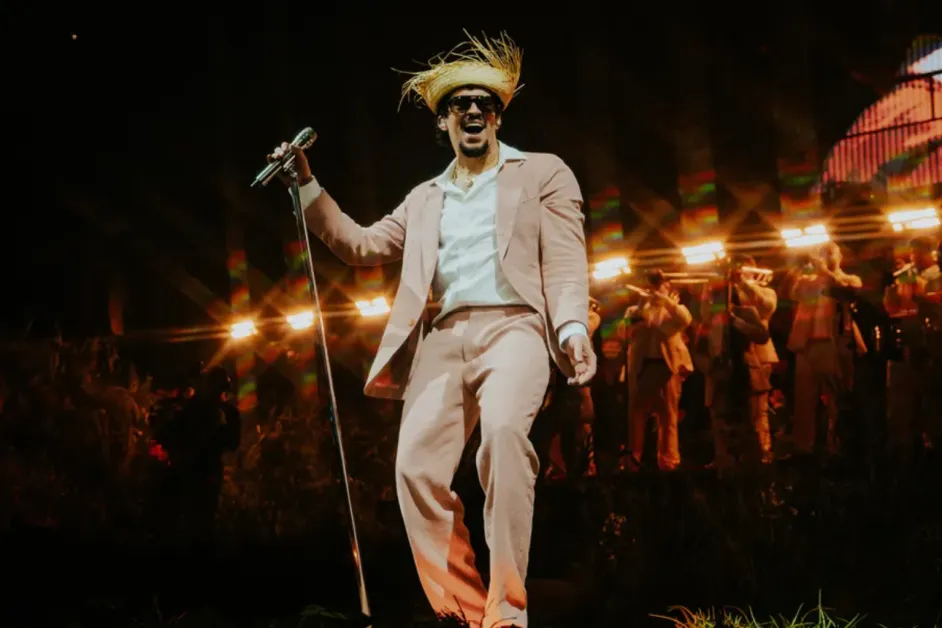Bad Bunny chosen for Super Bowl halftime, spotlighting Latin identity and his tensions with Trump

Bad Bunny’s selection to headline the Super Bowl halftime show carries weight far beyond music.
The choice puts Latin culture at center stage during the most-watched broadcast in the U.S. It also prompts questions about how much room the star will have for his signature symbolism and political commentary — including his criticisms of Donald Trump — given the NFL’s reputation for tightly controlling performances.
Why Bad Bunny matters
Bad Bunny isn’t just a chart-topping artist. His work consistently connects to Puerto Rican identity, colonial history, and immigrant struggles. Announcing his Super Bowl appearance, he dedicated it pointedly: “This is for my people, my culture, and our history.”
That message sets the tone for a performance with potential to carry deeper significance.
The 31-year-old, born Benito Antonio Martínez Ocasio, has become one of the world’s most streamed artists with albums like Un Verano Sin Ti, an all-Spanish record. He’s won three Grammys and 12 Latin Grammys, starred in films such as Bullet Train, Caught Stealing, and Happy Gilmore 2, and fronted major fashion campaigns. Heading into November’s Latin Grammys, he leads the field with 12 nominations, surpassing producer Édgar Barrera.
Bad Bunny vs. Trump
Throughout his career, Bad Bunny has openly clashed with Trump. During the final stretch of the 2024 campaign, he endorsed Kamala Harris after a comedian at Trump’s Madison Square Garden rally mocked Puerto Rico as a “floating island of garbage.” Soon after, he posted a video celebrating Puerto Rico’s beaches and artists with the caption: “garbage.”
His critiques have continued. Earlier this year, he shared an Instagram video that appeared to show immigration agents making arrests in Puerto Rico, with the filmer cursing the officials. On July 4, he released the music video for “NUEVAYoL,” which included a Trump-like voice apologizing to immigrants: “This country is nothing without the immigrants.”
He also changed his touring approach, reserving the first nine nights of his 31-show residency in Puerto Rico exclusively for locals and skipping U.S. stops altogether. “Like, (expletive) ICE could be outside,” he told i-D magazine. His tour has instead traveled through Latin America, Europe, Asia, and Australia.
Still, on Sunday, just before announcing his Super Bowl gig, he said: “I’ve been thinking about it these days, and after discussing it with my team, I think I’ll do just one date in the United States.”
A divided reaction
The halftime booking has already split opinion. California Gov. Gavin Newsom praised the decision on X, saying: “California is excited to welcome you to Super Bowl LX.”
But MAGA-aligned voices were quick to object. Ryan Fournier of Students for Trump said the decision-maker “should be fired.” Conservative commentator Benny Johnson labeled Bad Bunny a “massive Trump hater” and “anti-ICE activist,” while also criticizing his lack of English-language songs.
Bad Bunny has long dismissed such critiques. Asked by The New York Times about fans who don’t understand his lyrics, he simply sang into the microphone: “I don’t care.”
Trump’s cultural battles
Trump has a history of using sports as a political stage. He pushed for Pete Rose’s Hall of Fame induction, threatened Washington’s stadium deal over the team’s name, and has repeatedly targeted entertainers and companies. He blasted Jimmy Kimmel after remarks following the assassination of activist Charlie Kirk, reignited his feud with Rosie O’Donnell by suggesting he could strip her citizenship, and even weighed in on Cracker Barrel’s logo redesign — later celebrating when the company reversed course.
What’s at stake
For Bad Bunny, the halftime show offers the biggest possible stage to showcase his music, culture, and influence. For the NFL and Apple Music, the challenge is delivering a dazzling show that celebrates diversity without sparking advertiser backlash.
If Bad Bunny sticks purely to spectacle, it could be a landmark moment for Latin music. If he weaves in political imagery, it may become one of the most heavily dissected halftime shows in history.
How the show comes together
The production is a joint effort by the NFL, Roc Nation, and Apple Music. Since 2019, Roc Nation — led by Jay-Z — has selected the performers, with producer Jesse Collins also returning. Apple Music distributes the performance, but the NFL retains control over staging, broadcasting, and branding.
Artists don’t receive direct payment, but the payoff is global exposure. That imbalance gives the NFL leverage, though top acts have sometimes defied restrictions.
Boundaries on the stage
The league has often tried to limit political content, with mixed results. In 2020, Jennifer Lopez was asked to cut a section with children in cages, but refused. In 2022, Dr. Dre and Eminem ignored advice not to kneel or reference policing. And in 2012, rapper M.I.A. flashed a middle finger during Madonna’s set, later settling a multimillion-dollar dispute with the NFL.

